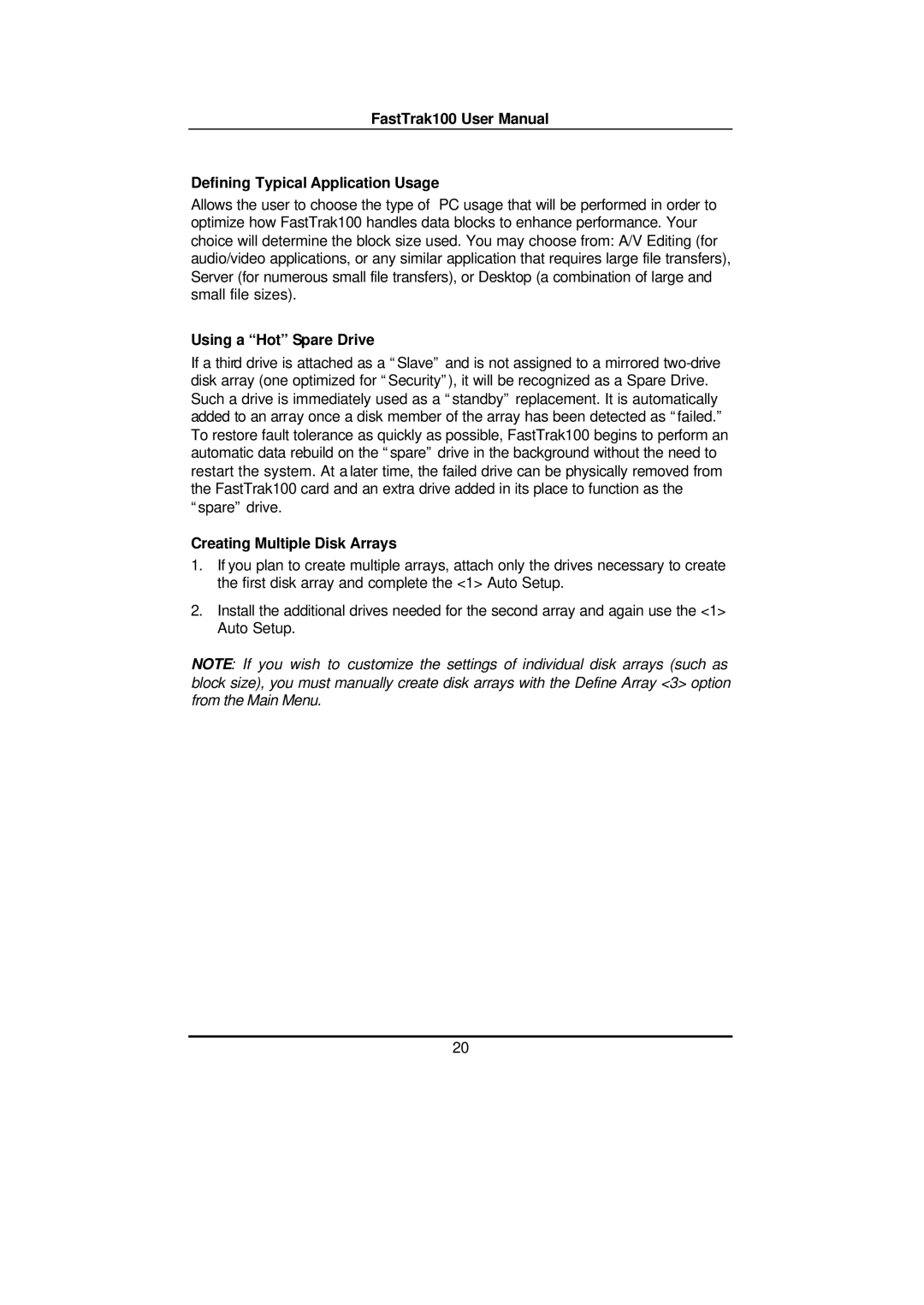
FastTrak100 User Manual
Defining Typical Application Usage
Allows the user to choose the type of PC usage that will be performed in order to optimize how FastTrak100 handles data blocks to enhance performance. Your choice will determine the block size used. You may choose from: A/V Editing (for audio/video applications, or any similar application that requires large file transfers), Server (for numerous small file transfers), or Desktop (a combination of large and small file sizes).
Using a “Hot” Spare Drive
If a third drive is attached as a “Slave” and is not assigned to a mirrored
Creating Multiple Disk Arrays
1.If you plan to create multiple arrays, attach only the drives necessary to create the first disk array and complete the <1> Auto Setup.
2.Install the additional drives needed for the second array and again use the <1> Auto Setup.
NOTE: If you wish to customize the settings of individual disk arrays (such as block size), you must manually create disk arrays with the Define Array <3> option from the Main Menu.
20
